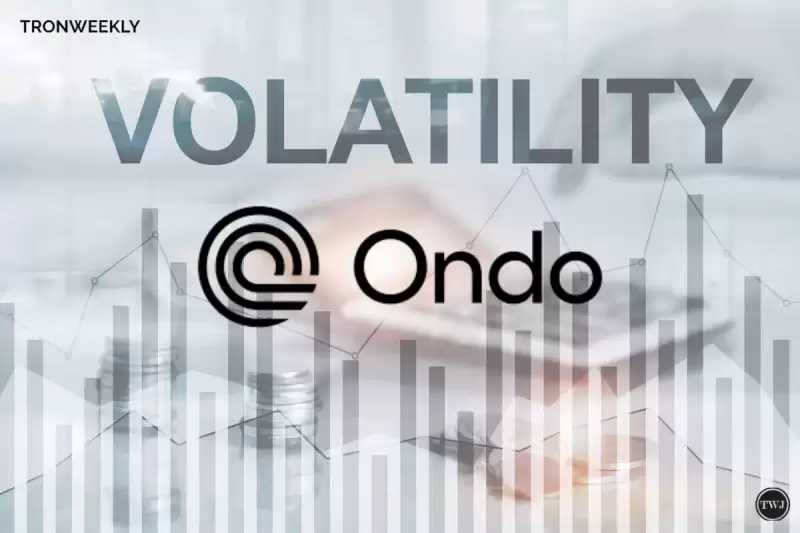 |
|
 |
|
 |
|
 |
|
 |
|
 |
|
 |
|
 |
|
 |
|
 |
|
 |
|
 |
|
 |
|
 |
|
 |
|
Cryptocurrency News Articles
The Bitcoin Revolution: NFTs on the Blockchain and What It Means for the Future
Feb 07, 2025 at 07:27 pm
Bitcoin, traditionally known as the leading cryptocurrency, has stepped into the world of Non-Fungible Tokens (NFTs) with the launch of the Ordinals protocol in January 2023.

Bitcoin, better known for its role as the leading cryptocurrency, has now ventured into the realm of Non-Fungible Tokens (NFTs) with the launch of the Ordinals protocol in January 2023. This development has brought about the capability to create NFTs directly on the Bitcoin blockchain, essentially turning every satoshi (the smallest unit of Bitcoin) into a unique asset. With over 77.4 million inscriptions (a term used to describe the process of adding an ordinal number to a satoshi, thereby creating an NFT on Bitcoin) recorded, Bitcoin is now becoming a platform for digital art and collectibles.
In this article, we'll delve deeper into Bitcoin's foray into NFTs, exploring its features, use cases, and what it means for the future of digital assets.
Bitcoin Ordinals: Creating NFTs on the Bitcoin Blockchain
The Ordinals protocol, created by Casey Rodarmor, has introduced a new way to generate NFTs on the Bitcoin blockchain. Unlike other NFT platforms like Ethereum or Solana, which operate on separate layer-1 blockchains, Bitcoin NFTs are directly inscribed on the satoshis.
This capability opens up a vast use case for Bitcoin, enabling the creation of unique digital items and a record of ownership on the blockchain. Each NFT is linked to a distinct satoshi, showcasing a notion of ownership and provenance.
High-Value Transactions and a Budding Market
One striking aspect of Bitcoin NFTs is the high-stakes transactions, evident in a recent sale where a Bitcoin NFT sold for an astounding $6.2 million. This sale occurred on January 28 and was for a digital artifact known as "Block 47." The high price points and enthusiasm among investors signal a budding market for Bitcoin NFTs.
However, it's worth noting that this market is still in its early stages and might not be compelling enough to drive immediate investment in Bitcoin. But, as the NFT landscape continues to evolve, it will be interesting to observe how this new avenue develops within the Bitcoin ecosystem.
Digital Assets and a Chain of Ownership
With Bitcoin NFTs, artists can now create and sell unique artworks on the Bitcoin network, expanding the possibilities for digital art. These NFTs serve as a certificate of authenticity and a record of ownership, immutably linked to the satoshis.
This capability aligns well with the core ethos of Bitcoin as a digital asset, fostering scarcity and a chain of ownership for digital creations. Artists can now integrate their work into the Bitcoin network, potentially reaching a vast audience of collectors.
Collectibles and Gaming Integration
Users can now own unique digital collectibles on Bitcoin, akin to those found on Ethereum or Solana. These collectibles can range from digital trading cards to unique game assets, opening up new avenues for collecting and trading.
Moreover, Bitcoin NFTs can be integrated into video games, allowing players to buy, sell, and trade unique game assets on the blockchain. This capability could enhance the gaming experience and introduce new possibilities for in-game economies.
Pros and Cons of Bitcoin NFTs
While Bitcoin NFTs present exciting possibilities, there are also some limitations to consider.
Pros:
Security: Bitcoin NFTs leverage the security and network integrity of the Bitcoin blockchain, which is renowned for its resilience against fraud and corruption.
Unique Ownership: Each inscription on the Bitcoin blockchain provides undeniable proof of ownership for the NFT, ensuring a clear chain of title.
Potential Market Growth: High-value transactions, such as the $6.2 million sale for a Bitcoin NFT, indicate a budding market that could rival traditional NFT platforms.
Cons:
High Transaction Costs: Fees for transactions and inscriptions on the Bitcoin blockchain can be higher compared to other platforms, especially during periods of network congestion.
Lower Speed: Bitcoin transactions are slower than those on platforms like Ethereum and Solana, which could limit the fast-paced nature of NFT trading.
Market Maturity: The NFT market on Bitcoin is still in its infancy and may not yet provide robust investment opportunities or a diverse selection of NFTs.
Disclaimer:info@kdj.com
The information provided is not trading advice. kdj.com does not assume any responsibility for any investments made based on the information provided in this article. Cryptocurrencies are highly volatile and it is highly recommended that you invest with caution after thorough research!
If you believe that the content used on this website infringes your copyright, please contact us immediately (info@kdj.com) and we will delete it promptly.
-

-

- Fidelity Investments Launches Cryptocurrency IRA Product
- Apr 04, 2025 at 04:55 pm
- output: Jakarta, Pintu News—Fidelity Investments recently announced the launch of an Individual Retirement Account (IRA) product that allows investors in the United States to invest at no cost in cryptocurrencies such as Bitcoin Litecoin
-

-

-

-

-

-

-























































